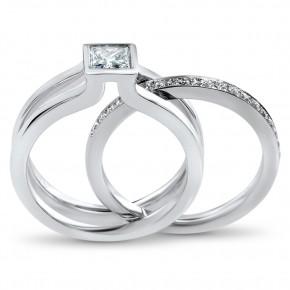Why is white gold white?

White gold is becoming more and more popular as a metal for jewellery, especially for engagement and wedding bands, and for jewellery with diamonds in it. But what is white gold, how does it differ from other golds, and what makes it white?
White gold is mix of gold (which in pure form is yellow in color), mixed with a white metal. The mix of gold with white gold alloys makes the metal white in color.
In the past, nickel and silver were the white metal alloys used to make white gold white. Today however, most commonly the gold will be mixed with palladium and silver, or very occasionally platinum. Palladium is a metal very similar to platinum and palladium is actually a more expensive metal than platinum. As palladium is now often used in white gold, white gold is generally a little more expensive than yellow gold.
White gold in it’s natural color has a slightly grey or grey/white color, but most commonly in its use in jewellery it is plated with Rhodium. The use of rhodium plating for white gold jewellery has been standard practice in the jewellery industry for a long time.
Rhodium is a very hard, silver-white metal that is a member of the platinum family. White gold is coated in rhodium by method of electroplating.
There are many benefits of choosing white gold for a piece of jewellery. Whilst the rhodium does wear off slowly over time, requiring re-plating (which can be easily done by most local jewellers), this process has the advantage of covering up superficial scratches on the surface of the item, and restoring the piece to its original bright white, reflective state.
White gold also complements, and makes diamonds appear whiter and brighter. For this reason, even jewellery that is made of yellow gold often has diamonds set in white gold claws or prongs. White gold settings also make diamonds enhance the beauty white diamonds.
About one in eight people may experience an allergy to white gold that has a nickel alloy. However this can be avoided by wearing white gold that is mixed with palladium or platinum, as these metals are hypoallergenic. All of Gillett’s Jewellers’ white gold engagement rings and white gold wedding rings are nickel free.
